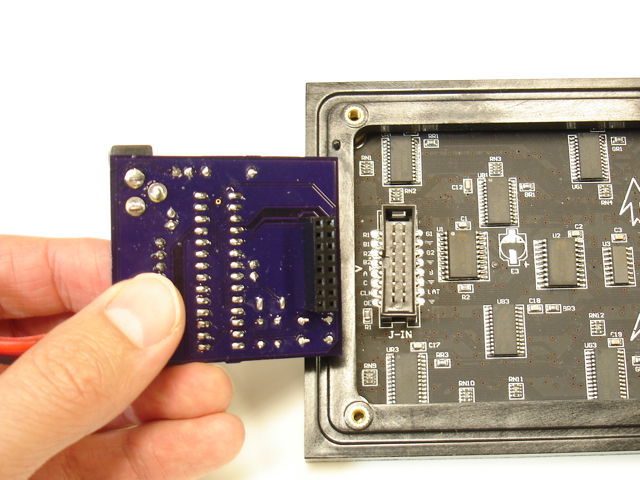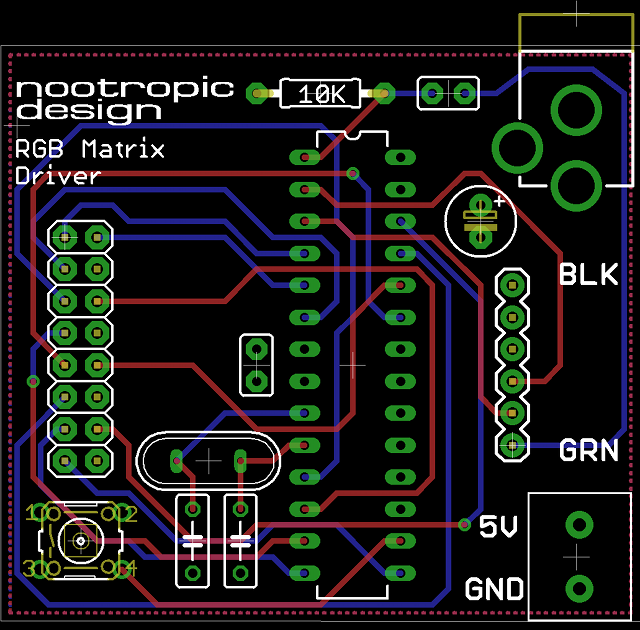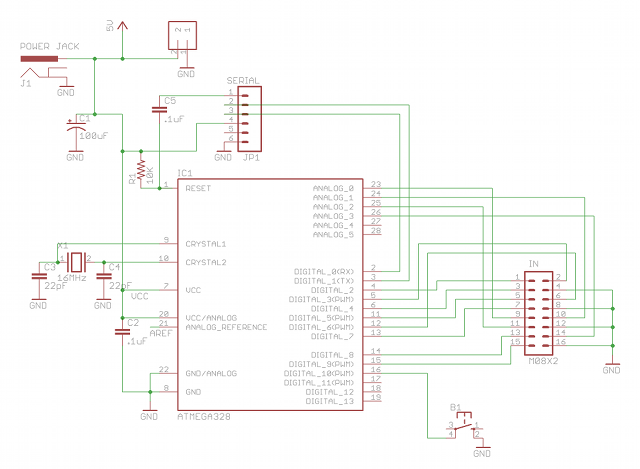A while back, I did a project using a 32×16 RGB LED matrix panel from Adafruit but found that connecting an Arduino to the panel was a real wiring mess. So I decided to design a small Arduino “backpack” board that snaps right onto the back of the panel so that there’s no more wiring frustration.
UPDATE! This is now available in our store!!!

The board is a simple Arduino that has an 8×2 female header so that it can snap right onto the back of the RGB panel. The board also includes a 2.1mm power jack for a 5V power supply, a 6 pin serial header for easy programming using a USB-serial cable, and a 2-pin terminal block for connecting to the panel’s power terminals.

I had the board manufactured by Laen’s PCB service at Dorkbot PDX, which is a great way to get boards made in small quantities for projects just like this. Customers of Laen will instantly recognize his signature purple boards.
I’m so happy with this simple solution for driving my panel that I used it for a display sign when I exhibited at the Twin Cities Maker “Minne-Faire” in April. I wrote some animations for the Arduino backpack to display, and they look great. The video doesn’t do them justice because it’s really hard to capture bright LEDs on video. This panel is blindingly bright!
Feel free to download the source for this demo.
I’m not selling this board as a product because the market is probably too small, but if you have one of these RGB panels, you can make your own. Just download the design files and have the PCB manufactured!



Wow! The backpack looks _great_ — and much better than the wiring mess that the basic tutorial promises/threatens! The animations look sharp, too. What kind of frame rate / bit depth are you getting driving this thing directly from the Arduino (vs through an FPGA as AdaFruit sort-of-suggests? Again: looks fantastic, and thank you for sharing! -Mark
The color depth is 12 bits, 4 bits for each color. So 16 levels for each of R, G, B.
Bit-banged PWM is used to implement the varying levels of brightness, and the panel driver library from Adafruit says the refresh rate is about 200Hz. It’s fast enough to make very smooth animations. There are lots of delays in the animations I made to keep it running at a viewable rate.
No need for an FPGA — an ATmega328 can handle it. It looks great.
Any chance you’ll be designing one of these for the 32×32 RGB Panel?
Kenny
Hi, are you using only one 32×16 RGB Matrix panel? Have you ever made a project using two or more of those 32×16 RGB Matrix panels and would you have a write up on it? Thanks much.
Steve, I only have one panel.